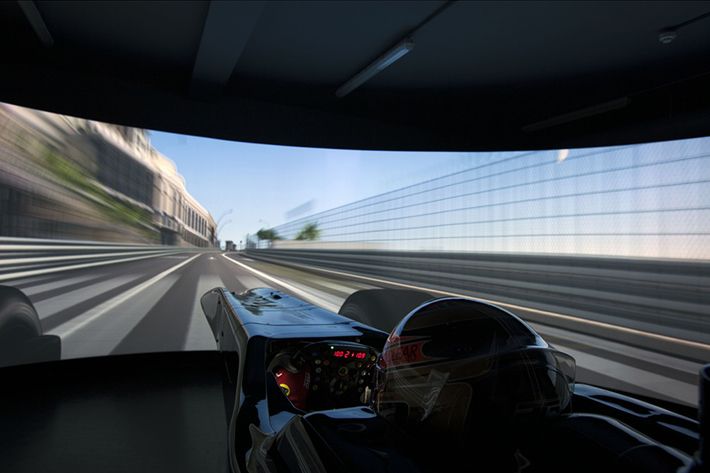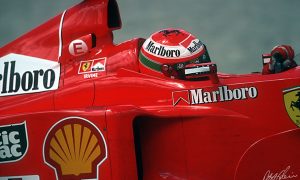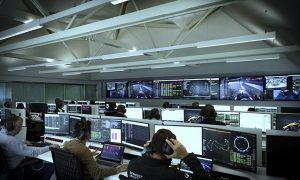HOW DOES IT WORK?
Simulation is not just about replication, the process is also about conducting a thorough analysis and evaluation of a design’s anatomy under specific conditions, as Ben Morgan explains.
“The most important component is our simulation of the vehicle. It is a computer model of our car that is brought together from all around the company.
“We take data from aerodynamics, from suspension design, from chassis design, from the power unit… to create the most realistic model of our vehicle that we can. This is what gives us the confidence that it is going to behave like a real car.
“To model the shape of the wings or the body, we don’t use a CAD file but what we call the ‘aero map’, which is a definition of how the aerodynamics behave on the car. It can come from the wind tunnel or it can be produced by one of our aerodynamicists.

“Some of the systems are sourced externally: the track graphics and the track model are bought from R Factor Pro. They go to the track to survey them, it is not Google Earth or anything like that.
“The tracks are laser-scanned with a level of precision of 1 millimetre. They give us pretty accurate updates some weeks ahead of the race weekend. Using the information the FIA gives they can predict the changes.
“A couple of corners were reprofiled in Singapore this year, but three weeks before the race we get a CAD drawing of how they gonna change it.
“The same for the resurfacing of Barcelona and Silverstone: we had this information before the Grand Prix. This goes beyond gaming level: every bump is modelled, every possible reference point that the driver uses is modelled…
“We bring together these different components from suppliers with our own software, with our own models, and we integrate them together to create an optimised package that suits us very well.”







